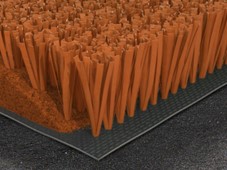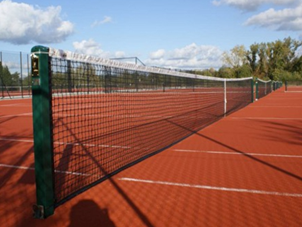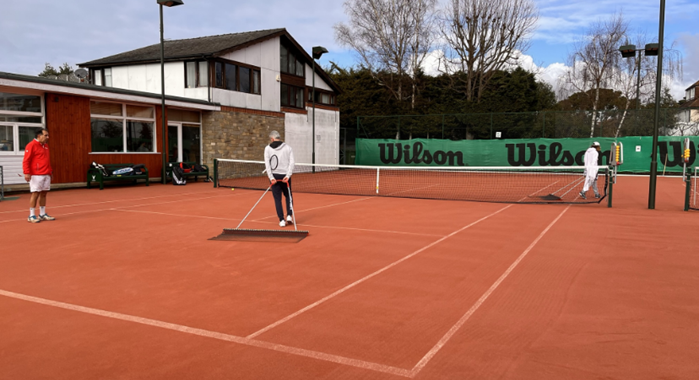Outdoor Court Resurfacing – Progress Report
- club-communication
- Mar 7, 2023
- 3 min read

Introduction
The outdoor courts 5-8 have reached the end of the useful life following the recent flood events on 17th January 2023 and require resurfacing to become playable once again.
Existing Courts
The outdoor courts have been surfaced with several materials during their existence, including:
Grey-green shale
Emerald macadam hardcourt
Synthetic Grass ‘Desso Slam’ – 1996
The playing surface is laid over a fly-ash sub-base which, at the time, was relatively inexpensive. However, this soil does not have great drainage properties and can be susceptible to frost (fortunately not a major risk in Jersey). If this were to be excavated and removed, it would be classified as contaminated waste.
A public sewer is also routed beneath the courts.
Reason for Resurfacing
Given the extent of damage caused by the flooding, it is necessary to replace the existing synthetic grass surface.
Programme
Requests for proposal have been issued to shortlisted contractors to confirm final price
Insurance issues are being finalised
Field trip to UK took place last weekend 24/25th February
Finalise recommendation mid-March
EGM to approve expenditure
Construction during April/ May subject to contractor availability
Choice of Playing Surfaces
Artificial clay has been identified as the preferred choice of playing surface for the following reasons:
Clay tennis courts offer a ‘slow’ playing surface, great grip and controlled spin, sliding and extended rallies
Reduces the gap between tennis players’ abilities; less importance on power game and more importance on strategy
Artificial clay is considered a ‘premium’ surface and in keeping with the Club’s position as Jersey’s Premier Tennis Facility
The surface is ‘soft’ relative to hardcourts and more sympathetic to players’ bodies. As carpet fibres are covered, there is less potential for courts to become slippery/ inconsistent which can lead to injury
Artificial Clay Courts are the most popular court surface being installed by clubs across the UK
Quick dry properties allow for play soon after rain
Negative aspects of Clay Surfaces:
Courts to be ‘dragged’ following matches to redistribute sand ( <5minutes)
Dust/grit to be managed so not be dragged through clubhouse (sand catchers near court exits)
Flood damage potential
Alternative surfaces have been considered

Synthetic Grass (Like for like):
- Familiar
- Slightly cheaper
- ‘Soft’ surface
- Slow-medium pace

Porous Acrylic:
- Rubber layer below acrylic paint
- Comparable cost to artificial clay
- ‘Soft-ish’ surface
- Liable to damage
- Slow-medium pace
- Flood resistant
- Wait for play after rain

Non-porous Acrylic (Same as Courts 1-4):
- Lowest cost
- Low maintenance
- Medium pace
- Hard surface
- No variety for club
- Flood resistant
- Wait for play after rain
Scope of Works
The project will involve:
By Jersey demolition contractor:
1. Strip out and dispose existing synthetic grass surface
2. Stripout and dispose tennis court fencing
By Tennis Court Specialist Contractor:
1. Clean and improve drainage on existing sub-base by piericing
2. Lay new 40mm thick porous tarmac surface to provide level base and improve drainage
3. Install new artificial clay court surface
4. Provide new netposts, sockets and centre-strap anchors
5. Provide new chainlink court fencing and access gates
The new surface has an estimated life expectancy of 10-15 years. Subject to regular maintenance and repair.

Construction Costs
3no. specialist tennis court contractors with experience of working in the Channel Islands have been shortlisted to provide a turnkey solution.
The total cost of the project should not exceed £210 to 250,000. This includes all shipping, business licences, staff accommodation and travel.
Approximate cost breakdown:
Stripout and dispose existing surface - £17,500
New Macadam surface - £60,000
New Artificial Clay surface (carpet and fill) - £100,000
New fencing and gates (164 metres x 2.7m) - £50,000
Costs have increased 10-20% in the past 12 months.
Funding The courts will be funded directly from the club’s cash reserves.
The LTA was contacted with respect to providing an interest-free grant. However, the grant only funds conversion of courts to all-weather surfaces and we do not qualify as the existing courts are (ironically) deemed to be all-weather.
Commercial loans are currently quite expensive.
We are awaiting the final outcome of the loss adjuster’s report with regards to insurance payout resulting from the flood damage.
Field Visit
During the weekend of 24/25 February: David Rasmussen, Andrew Evans and Scott Weaver travelled to the UK to inspect and play on a range of artificial clay courts installed by the shortlisted contractors.
We were welcomed by the following clubs:
Westside LTC, Wimbledon
St George’s Hill LTC, Surrey
Middlesex LTC, Ealing
The surfaces were largely similar in terms of their characteristics with a slow, high bounce and the ability to slide with confidence.
There were noticeable differences in the levels of maintenance carried out between the clubs, and it is clear that regular maintenance is required to keep courts in good condition over a long period of time. The courts which were over 10years old, played a little faster than the new courts but still looked to be in great condition with no tears evidence of wear.
The time required to sweep a court at the end of play took no more than a couple minutes.
The weather during the visit was generally fine, however there was a brief shower whilst at St George’s Hill LTC during which all the tennis matches continued to play.




























Comments